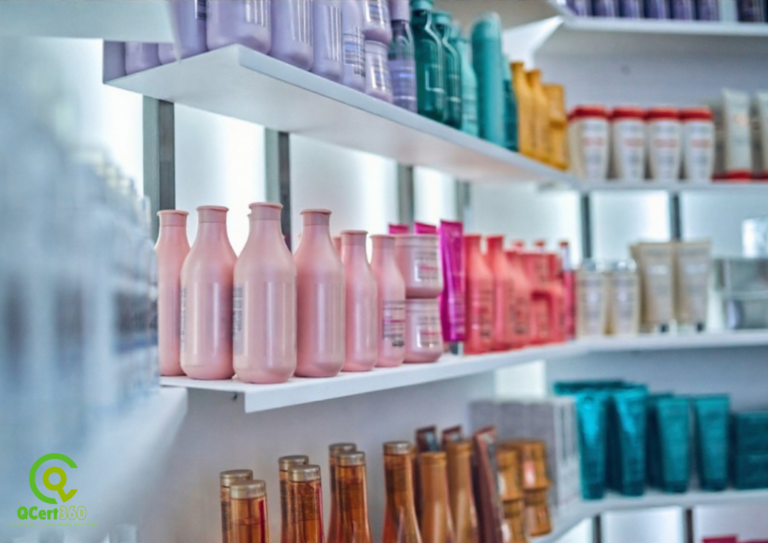
“Clean beauty” isn’t clean if the way you design, manufacture, fill, label, store, and ship products is messy. Consumers in South Africa, Nigeria, Kenya, Ghana, Egypt, Morocco, and Rwanda aren’t just reading ingredient lists anymore—they’re asking how you control contamination, validate suppliers, train staff, document every batch, and respond when something goes wrong. That’s where GMP (Good Manufacturing Practices) and ISO 22716 for cosmetics step in. They turn good intentions into auditable, repeatable, and scalable processes.
If you’re a cosmetics brand, contract manufacturer, private labeler, filler, or distributor anywhere in Africa—or exporting to the EU, UK, or Middle East—ISO 22716 GMP for cosmetics manufacturers is fast becoming a business essential. Not a “nice to have.” A must.
GMP vs ISO 22716—what’s the real difference?
- GMP (Good Manufacturing Practices) is the broader concept: a regulatory-grade discipline that ensures products are consistently produced and controlled to quality standards appropriate to their intended use. Regulators (like the FDA, SAHPRA, NAFDAC, PPB, TFDA) expect it.
- ISO 22716 is the internationally recognised GMP guideline tailor‑made for cosmetics. It translates the spirit of GMP into cosmetics-specific controls—covering people, premises, equipment, raw materials, production, QC, packaging, labelling, complaints, recalls, storage, and distribution.
Put simply: ISO 22716 is how cosmetics companies operationalize GMP—and prove it to buyers, auditors, regulators, and investors.
Why clean beauty needs clean processes
Here’s what “clean processes” actually mean inside a factory or lab:
- Contamination control
Defined gowning procedures, controlled environments, validated cleaning, segregated materials. If you talk about “toxin-free”, your lines can’t be biohazardous. - Raw material integrity
Supplier qualification, COAs, quarantine, sampling plans, traceability. (Think cosmetics GMP compliance Africa for import-heavy brands that source actives globally.) - Documented batch records
If you can’t trace a defect back to a batch and forward to all affected customers, you don’t have control. Period. - Change control
Tweaking a preservative or switching a bottle seems harmless—until you get stability issues, microbial fails, or label misprints. GMP (and ISO 22716) force you to treat changes as risks. - Complaint & recall readiness
Clean beauty brands often have big communities. A single contamination-driven infection can go viral (for the wrong reasons). ISO 22716 requires structured complaint handling and recall procedures.
People and training
SOPs don’t run lines—people do. GMP for skincare startups often fails here: insufficient role-based training, weak supervision, and “tribal knowledge” instead of documented practice.
The commercial case: why brands in Africa are moving fast
- Retailers and distributors in South Africa, Egypt, Morocco, and the UAE are increasingly asking for ISO 22716 certificates before they list a product.
- Export markets (EU, UK) expect proof of GMP—ISO 22716 documentation templates and technical files help you pass distributor audits.
- Contract manufacturers who can show cosmetic contract manufacturing GMP maturity win better clients, longer contracts, and higher margins.
Regulatory risk: as African cosmetic markets mature, authorities are tightening controls. Getting ahead of the curve with ISO 22716 is a strategic hedge
Real-world case study: How a Kenyan indie brand scaled into retailers across Africa & the EU
Company: A natural skincare startup based in Nairobi, Kenya, producing serums, butters, and cleansers with African botanicals.
Ambition: Enter large retail chains in South Africa and Nigeria, and distribute through a partner in France.
Pain points:
- Inconsistent batch records, no validated cleaning procedures, and supplier COAs that didn’t match specs.
- Retail buyers requested ISO 22716 or proof of GMP audit checklist for cosmetics.
- A minor contamination event led to 2,500 units recalled—costly and brand-damaging.
What changed with QCert360:
- Gap assessment vs ISO 22716—end-to-end mapping of processes, people, documentation, and facilities.
- Raw material supplier qualification program—tiered risk-based approach, specs aligned to COAs, and sampling plans.
- Batch documentation overhaul—digital batch records, controlled versions of SOPs, and deviation/CAPA workflows.
- Hygiene and cleaning validation—clear zoning, cleaning logs, and surface swab verification.
- Complaint & recall procedures—traceability proved down to the bottle, not just the batch.
- Training—operators, QC analysts, and warehouse teams trained on GMP essentials and GMP validation in cosmetic plants.
Results (9 months):
- Achieved ISO 22716 certification.
- Listed by two major SA retail chains; secured a private-label contract in Ghana.
- Reduced rework and scrap by 31%; complaints cut by 46%.
- Built a ready-to-share GMP audit pack—no panic before distributor audits.
ISO 22716 Implementation roadmap (practical, not painful)
- Baseline assessment
Where are you vs ISO 22716? Expect findings in premises, documentation, raw material control, labelling, and recall procedures. - Risk-based prioritisation
Fix what actually puts product safety or brand risk at stake (contamination control, traceability) before polishing minor SOPs. - Build the QMS backbone
Policies → SOPs → Work Instructions → Forms. Keep it lean. Use visuals. Train to it. - Supplier and raw material control
Categorise suppliers by risk, introduce COA specs, AQL sampling, and performance reviews. - Hygiene, cleaning, and validation
Write it, validate it, document it, train it—then audit it. - Complaint, deviation & CAPA
No document-only systems. Make sure CAPAs are root cause driven and effectiveness-checked. - Internal audit & management review
Make them real. Use them to surface issues before retailers or regulators do. - Certification
Once the system is live (and producing records) for a few months, invite the certification body.
How QCert360 helps you get cosmetic GMP certified—and stay compliant
Most consultants will hand you a template pack. QCert360 builds systems that operators can use, auditors can trust, and retailers respect. We’ve implemented ISO 22716 and GMP for brands and contract manufacturers across South Africa, Nigeria, Kenya, Ghana, Egypt, Morocco, Tunisia, Tanzania, and Ethiopia—and prepped them for export to the EU, UK, and Middle East.
What we actually do:
- ISO 22716 gap assessment with a COPQ (Cost of Poor Quality) lens—what’s costing you now?
- Design or streamline your cosmetics QMS—lean, visual, role-based.
- Supplier qualification and raw material control systems that survive audits.
- Training that sticks—from production to QC to warehousing and distribution.
- Internal audits and mock certification audits—so the real one is smooth.
- Post-cert support—we keep you updated as regulations evolve (e.g., EU cosmetic regs, UK divergence, African harmonisations).
- Integrated systems—we can align ISO 22716 with ISO 9001, ISO 14001, ISO 45001, ISO 27001 (for sensitive formulation/IP), and ISO 22301 (continuity for contract manufacturers).
QCert360
📩 contact@qcert360.com
📞 +91 7483870406
Ask for our ISO 22716 Starter Kit: gap checklist, SOP map, batch record template, and a GMP audit checklist for cosmetics.
10 FAQs on GMP & ISO 22716 for cosmetics
1) Do small or “artisanal” cosmetics brands really need ISO 22716?
If you’re selling through retail chains, exporting, or scaling—yes. It’s the most recognised way to prove you control risk.
2) Is ISO 22716 mandatory?
Not always by law—but many buyers, regulators, and distributors treat it as the de facto requirement.
3) How long does ISO 22716 certification take?
Typically 2–4 months, depending on your baseline and whether you operate one site or multiple.
4) What’s the difference between ISO 22716 and GMP?
ISO 22716 is the cosmetics-specific way to implement GMP. GMP is the general principle; 22716 is the practical guide.
5) Can ISO 22716 integrate with ISO 9001?
Absolutely. Many cosmetics manufacturers run an integrated QMS—saves time and audit fatigue.
6) How much does ISO 22716 certification cost in Africa?
Costs vary by size, scope, and readiness. We can give you a transparent ISO 22716 certification cost Africa estimate after a quick scoping call.
7) Do contract manufacturers need ISO 22716?
Yes—cosmetic contract manufacturing GMP maturity is now a major client selection factor.
8) Will we need a cleanroom?
Not always. But you will need defined hygiene zones, validated cleaning, and strong contamination controls.
9) We already follow EU cosmetic regulations—is ISO 22716 still useful?
Yes—ISO 22716 structures your compliance, makes it auditable, and helps you scale consistently.
10) Can QCert360 help with documentation and training?
End to end. From ISO 22716 documentation templates to on-site training and mock audits—we handle it.
Clean beauty needs clean processes. If you want your brand to sit confidently on shelves in Johannesburg, Lagos, Nairobi, Accra, Cairo, Casablanca—or Paris and London—then ISO 22716 + GMP isn’t just smart. It’s strategic.
Ready to make it real? Email QCert360 at contact@qcert360.com and ask for the ISO 22716 Starter Kit.


